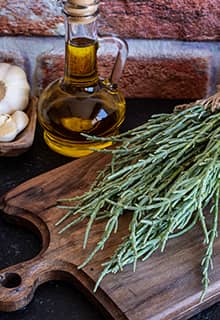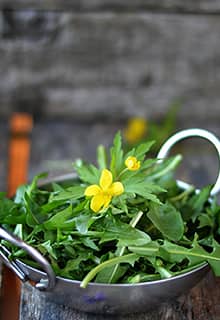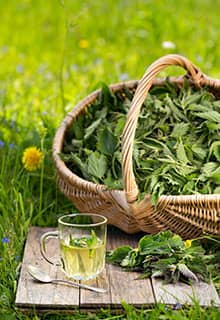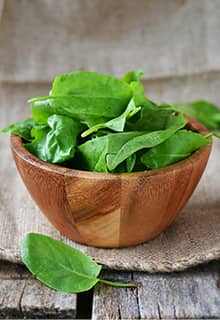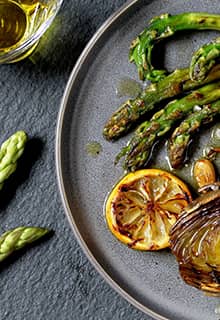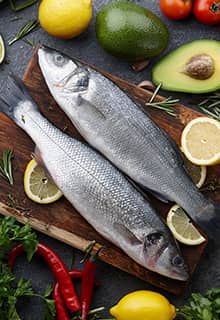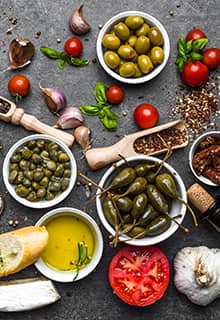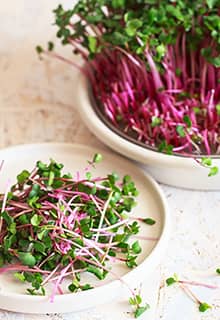

Mediterranean diet
Turkish cuisine is inherently healthy and highly seasonal, with most dishes being created from the abundance of fresh produce available.
The flavours and spices that go into Turkish Cuisine are not only delicious, but they also have antioxidant properties, working to lower cholesterol, eliminate toxins and boost immunity.
The defining characteristic of Mediterranean Cuisine is that it uses local fresh ingredients resulting in dishes which are both substantial yet not too heavy and with great flavours. The fertile environment produces a great assortment of excellent vegetable produce as well as quality olive oil and an assortment of spices. All these contribute to a diet which is healthy and varied. The spices and olive oil change from city to city.
As well as a rich assortment of fish and meat cuisine, Türkiye also offers numerous vegetable-based dishes based on the local produce of the fertile terrains of the Aegean and Mediterranean coastlines. Most are served before eating the main dish, as an appetiser. The collective name for these starter or side dishes is meze.
Traditionally arranged in the middle of the table, diners slowly snack on them while sometimes drinking the favourite local alcoholic drink of Rakı.
Some well-known examples of meze include:
- Grilled Aubergine Salad (Patlıcan Salatası)
- Stuffed Vine Leaves (Dolma)
- Spicy Pepper Paste (Acılı ezme)
- Artichokes (Enginar)
- Yoghurt with Spices (Haydari)
Healing Herbs
Anatolia is home to some interesting herbs. These herbs are unique to the Aegean and their distinctive tastes are much used in the local cuisine. Some have claims to health and medicinal benefits.
Ebegumeci - Mallow
Naturally growing throughout Türkiye and the Aegean region, mallows are part of the large family of Malvaceae plants that include cotton, okra and hibiscus. It is an edible plant, often cooked in olive oil. Its leaves are believed to have healing properties and are used as a poultice to reduce inflammation. The leaves are believed to be particularly useful for drawing out boils and cysts from the skin.
Arapsaçı - Fennel
Arapsaçı is similar to dill at first glance, but its flavour is quite different. Arapsaçı seeds, leaves and stems are used in cooking. This herb is mostly sautéed with olive oil and onions, as with many other wild herbs of the Aegean. It is commonly cooked with lamb or used in böreks.
Turp Otu - Radish Leaves
Radish leaves are full of flavour and high in vitamins and antioxidants, meaning they should be used as often as possible. Eaten either lightly cooked in a salad with garlic and yoghurt or cooked in eggs, radish leaves are much used throughout the Aegean. Locals further believe radish leaves are good for the health of the kidney and liver function, and in the treatment of rheumatism, asthma and breathing difficulties - why not test out their hypotheses for yourself?
Deniz Börülcesi - Samphire
Samphire is found widely along the Turkish coast. This delicious sea vegetable is best enjoyed as a meze, cooked simply in olive oil with fresh lemon juice - what could be more evocative of summer? Samphire is high in iodine, an essential mineral for thyroid health.
Şevketi Bostan - Blessed Thistle
Also known as spotted thistle, this is typically found growing in January. This herb can be used in salads, cooked with meat or simply cooked in olive oil and eaten by itself. A dish widely made throughout Türkiye is lamb with blessed thistle. Locals believe blessed thistle can help with kidney and digestion issues.
Kuzu Kulağı - Green Sorrel
Kuzu Kulağı is a detoxifying herb-vegetable that has a sour taste. This is a potent herb, with high levels of Vitamins A and C in addition to calcium, potassium, magnesium and phosphorus. Traditional uses include steeping the leaves for use as a tea to reduce fever and inflammation while juicing the leaves and stems are believed to act as a kidney cleanser and diuretic.
Radika - Dandelion
Radika is used widely for its health and medicinal properties. The leaves can be eaten raw, cooked, dried or steeped. Radika leaves are similar to mustard leaves and can be used to similar effect. The young leaves and buds are usually eaten raw, though slightly bitter, they are a tasty addition to soups and salads. The leaves and stalks are high in Vitamins A and C and have high levels of iron, calcium and potassium.
Isırgan - Nettle
Isırgan, also known as dalağan or dalan, is one of the oldest known herbs. Having been used for centuries in cooking and homeopathic remedies, Isırgan leaves and roots have various applications. Those working with the herb should be sure to wear gloves as the leaves have tiny spikes, a naturally occurring defence mechanism. People often drink tea brewed from the leaves, believing it to help with lung infections, colds, the digestive system and even measles.

